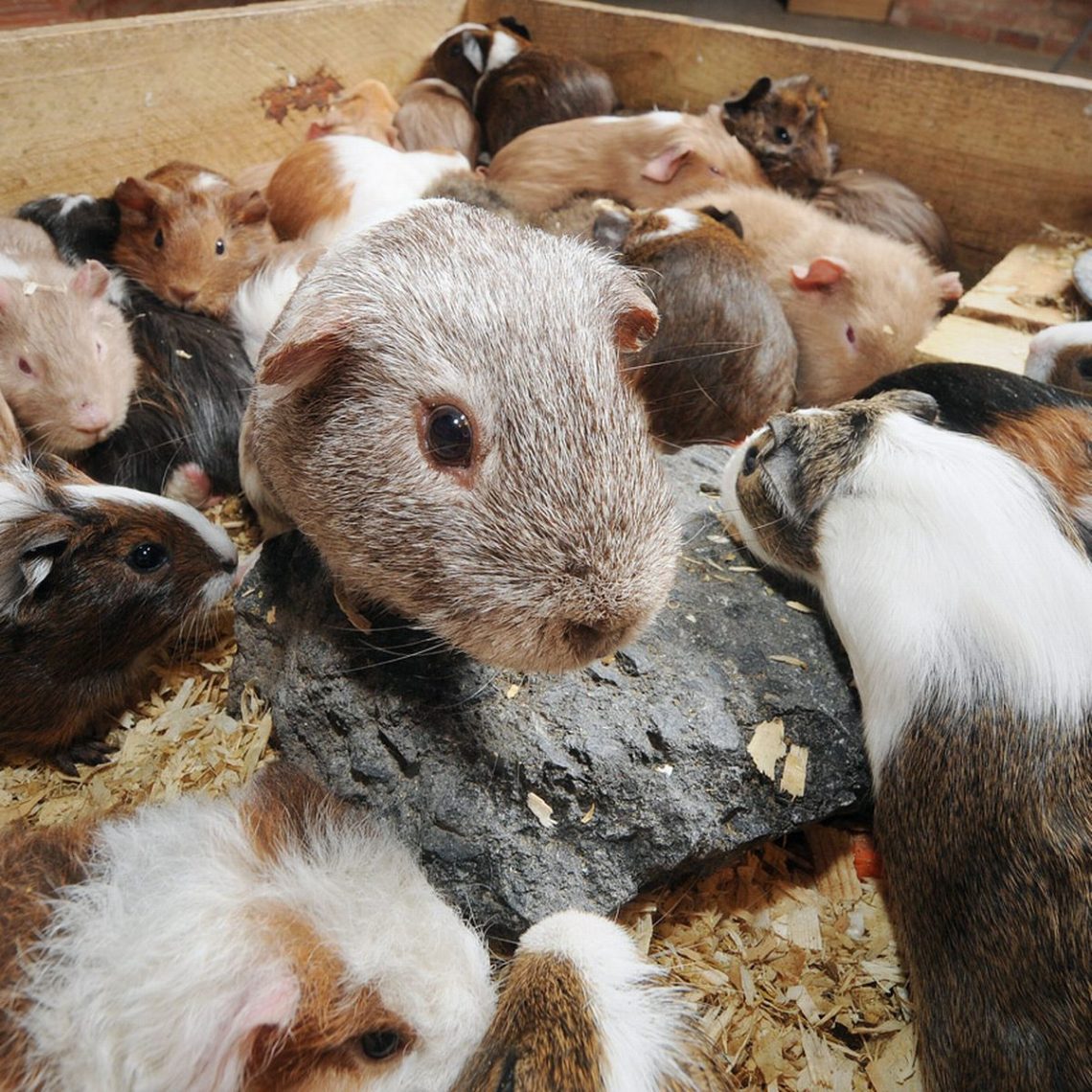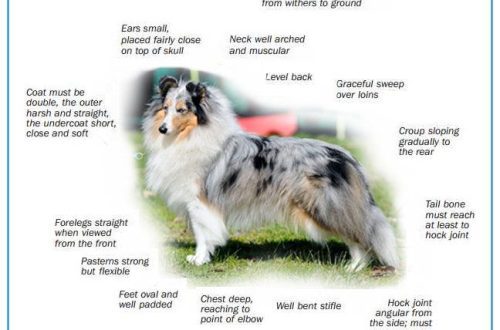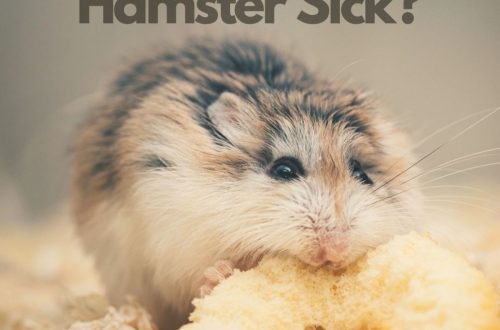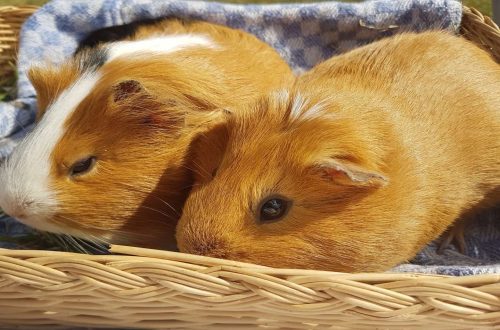
Ang mga gamot sa produksyon sa baboy karon
Written by Karena Farrer
Wandering the vast expanses of the Internet one fine sunny September day, I couldn’t believe my eyes when I came across a book about guinea pigs, published in 1886, which was put up for auction. Then I thought: “This cannot be, for sure a mistake crept in here, and in fact it meant 1986.” There was no mistake! It was an ingenious book written by S. Cumberland, published in 1886 and bearing the title: “Guinea pigs – pets for food, fur and entertainment.”
Five long days later, I received a congratulatory notice that I was the highest bidder, and shortly thereafter the book was in my hands, neatly wrapped and tied with a ribbon…
Flipping through the pages, I found that the author covers all the nuances of feeding, keeping and breeding a domesticated pig from the point of view of pig breeding today! The whole book is an amazing story of pigs that has survived to this day. It is impossible to describe all the chapters of this book without resorting to the publication of a second book, so I instead decided to focus only on “pig breeding” in 1886.
The author writes that pigs can be grouped into three groups:
- “Old-type smooth-haired pigs, described by Gesner (Gesner)
- “Wire-haired English, or so-called Abyssinian”
- “Wire-haired French, so-called Peruvian”
Among smooth-haired pigs, Cumberland distinguished six different colors that existed in the country at that time, but all colors were spotted. The only Selfies (one color) are white with red eyes. The explanation given by the author for this phenomenon is that the ancient Peruvians (humans, not pigs!!!) must have been breeding pure white pigs for a long time. The author also believes that if the breeders of pigs were more competent and careful selection, it would be possible to get other colors of the Self. Of course, this would take some time, but Cumberland is sure that Selfies could be obtained in all possible colors and shades:
“I suppose it is a matter of time and selection work, long and painstaking, but we have no doubt that Selfs can be obtained in any color that appears in tricolor gilts.”
The author goes on to predict that Selfies will probably be the first specimen of porosity pigs among amateurs, although this will require fortitude and patience, since Selfs appear quite rarely” (with the exception of white pigs). Markings tend to show up in offspring as well. Cumberland mentions that during his five years of research in pig breeding, he never met a truly black Self, although he came across similar pigs.
The author also proposes breeding gilts based on their markings, for example, combining black, red, fawn (beige) and white colors that will create a tortoiseshell color. Another option is to breed gilts with black, red or white masks. He even suggests breeding pigs with belts of one color or another.
I believe that the first description of the Himalayans was made by Cumberland. He mentions a white smooth-haired pig with red eyes and black or brown ears:
“A few years later, a breed of pig with white hair, red eyes and black or brown ears appeared in the Zoological Garden. These gilts later disappeared, but as it turns out, black and brown ear markings unfortunately tend to show up occasionally in litters of white gilts.”
Of course, I could be wrong, but perhaps this description was a description of the Himalayans?
It turned out that Abyssinian pigs were the first popular breed in England. The author writes that Abyssinian pigs are usually larger and heavier than smooth-haired ones. They have broad shoulders and large heads. The ears are fairly high. They are compared to smooth-haired pigs, which usually have very large eyes with a soft expression, which give a more charming look. Cumberland notes that the Abyssinians are strong fighters and bullies, and have a more independent character. He has come across ten different colors and shades in this wonderful breed. Below is a table drawn by Cumberland himself showing the colors that are allowed to work:
Smooth-haired pigs Abyssinian pigs Peruvian pigs
Black shiny Black
Fawn Smoky Black or
Blue Smoke Black
White Fawn Pale Fawn
Red-brown White White
Light gray Light red-brown Light red-brown
Dark red-brown
Dark brown or
Agouti Dark brown or
Agouti
Dark brown speckled
Dark gray Dark gray
Murag gray
six colors ten colors five colors
The hair of Abyssinian pigs should not exceed 1.5 inches in length. A coat longer than 1.5 inches may suggest that this gilt is a cross with a Peruvian.
Peruvian gilts are described as long-bodied, heavy-weight, with long, soft hair, about 5.5 inches long.
Cumberland writes that he himself bred Peruvian pigs, whose hair reached 8 inches in length, but such cases are quite rare. Hair length, according to the author, needs further work.
Peruvian pigs originated in France, where they were known under the name “angora pig” (Cochon d`Angora). Cumberland also describes them as having a small skull compared to their body, and that they are much more prone to disease than other breeds of pigs.
In addition, the author believes that pigs are very well suited for keeping at home and breeding, that is, for the status of “hobby animals”. The results of the work can be obtained quite quickly, compared with other animals, such as horses, where many years must pass for the emergence and consolidation of various breeds:
“There is no creature more destined for a hobby than pigs. The speed with which new generations are emerging provides exciting opportunities for breeding.”
The problem for pig breeders in 1886 was that they didn’t know what to do with pigs not fit for breeding (“weeds,” as Cumberland calls them). He writes about the difficulty of selling non-compliant gilts:
“A kind of difficulty that has hitherto prevented pig farming from becoming a hobby is the inability to sell “weeds”, or in other words, animals that do not satisfy the breeder’s requirements.
The author concludes that the solution to this problem is the use of such pigs for culinary preparations! “This problem can be solved if we use these pigs for cooking various dishes, since they were originally domesticated for this purpose.”
One of the following chapters is really all about recipes for cooking pigs, very similar to cooking regular pork.
Cumberland puts a lot of emphasis on the fact that hog production is indeed very much in demand and, in the future, breeders should cooperate to achieve the goals of breeding new breeds. They need to constantly keep in touch and exchange ideas to help each other, maybe even organize clubs in each city:
“When clubs are organized (and I believe there will be in every city in the kingdom), it is even impossible to predict what amazing results may follow.”
Cumberland ends this chapter with how each gilt breed should be judged and describes the main parameters that should be considered:
Class Smooth-haired pigs
- Best Selfies of each color
- Best White with red eyes
- Best Tortoiseshell
- Best White with black ears
Points are awarded for:
- Correct short hair
- Square nose profile
- Large, soft eyes
- Bulok nga kolor
- Marking Clarity in Non-Selfs
- Size
Abyssinian pig class
- The best Self color gilts
- Best Tortoiseshell Pigs
Points are awarded for:
- Wool length not exceeding 1.5 inches
- Color brightness
- Shoulder width, which should be strong
- mustache
- Rosettes on wool without bald patches in the center
- Size
- Ang kabug-at
- Paglihok
Peruvian pig class
- The best Self color gilts
- Best Whites
- Best variegated
- Best whites with white ears
- Best White with black ears and nose
- The best pigs of any color with hanging hair, with the longest hair
Points are awarded for:
- Size
- The length of the coat, especially on the head
- Cleanliness of wool, no tangles
- General health and mobility
Ah, if only Cumberland had the opportunity to attend at least one of our modern Shows! Wouldn’t he be amazed at what changes the breeds of pigs have undergone since those distant times, how many new breeds have appeared! Some of his predictions about the development of the pig industry have come true when we look back and look at our pig farms today.
Also in the book there are several drawings by which I can judge how much breeds such as the Dutch or Tortoise have changed. You can probably guess how fragile this book is and I have to be extremely careful with its pages while reading it, but despite its dilapidation, it is truly a valuable piece of swine history!
Source: CAVIES Magazine.
© 2003 Translated by Alexandra Belousova
Written by Karena Farrer
Wandering the vast expanses of the Internet one fine sunny September day, I couldn’t believe my eyes when I came across a book about guinea pigs, published in 1886, which was put up for auction. Then I thought: “This cannot be, for sure a mistake crept in here, and in fact it meant 1986.” There was no mistake! It was an ingenious book written by S. Cumberland, published in 1886 and bearing the title: “Guinea pigs – pets for food, fur and entertainment.”
Five long days later, I received a congratulatory notice that I was the highest bidder, and shortly thereafter the book was in my hands, neatly wrapped and tied with a ribbon…
Flipping through the pages, I found that the author covers all the nuances of feeding, keeping and breeding a domesticated pig from the point of view of pig breeding today! The whole book is an amazing story of pigs that has survived to this day. It is impossible to describe all the chapters of this book without resorting to the publication of a second book, so I instead decided to focus only on “pig breeding” in 1886.
The author writes that pigs can be grouped into three groups:
- “Old-type smooth-haired pigs, described by Gesner (Gesner)
- “Wire-haired English, or so-called Abyssinian”
- “Wire-haired French, so-called Peruvian”
Among smooth-haired pigs, Cumberland distinguished six different colors that existed in the country at that time, but all colors were spotted. The only Selfies (one color) are white with red eyes. The explanation given by the author for this phenomenon is that the ancient Peruvians (humans, not pigs!!!) must have been breeding pure white pigs for a long time. The author also believes that if the breeders of pigs were more competent and careful selection, it would be possible to get other colors of the Self. Of course, this would take some time, but Cumberland is sure that Selfies could be obtained in all possible colors and shades:
“I suppose it is a matter of time and selection work, long and painstaking, but we have no doubt that Selfs can be obtained in any color that appears in tricolor gilts.”
The author goes on to predict that Selfies will probably be the first specimen of porosity pigs among amateurs, although this will require fortitude and patience, since Selfs appear quite rarely” (with the exception of white pigs). Markings tend to show up in offspring as well. Cumberland mentions that during his five years of research in pig breeding, he never met a truly black Self, although he came across similar pigs.
The author also proposes breeding gilts based on their markings, for example, combining black, red, fawn (beige) and white colors that will create a tortoiseshell color. Another option is to breed gilts with black, red or white masks. He even suggests breeding pigs with belts of one color or another.
I believe that the first description of the Himalayans was made by Cumberland. He mentions a white smooth-haired pig with red eyes and black or brown ears:
“A few years later, a breed of pig with white hair, red eyes and black or brown ears appeared in the Zoological Garden. These gilts later disappeared, but as it turns out, black and brown ear markings unfortunately tend to show up occasionally in litters of white gilts.”
Of course, I could be wrong, but perhaps this description was a description of the Himalayans?
It turned out that Abyssinian pigs were the first popular breed in England. The author writes that Abyssinian pigs are usually larger and heavier than smooth-haired ones. They have broad shoulders and large heads. The ears are fairly high. They are compared to smooth-haired pigs, which usually have very large eyes with a soft expression, which give a more charming look. Cumberland notes that the Abyssinians are strong fighters and bullies, and have a more independent character. He has come across ten different colors and shades in this wonderful breed. Below is a table drawn by Cumberland himself showing the colors that are allowed to work:
Smooth-haired pigs Abyssinian pigs Peruvian pigs
Black shiny Black
Fawn Smoky Black or
Blue Smoke Black
White Fawn Pale Fawn
Red-brown White White
Light gray Light red-brown Light red-brown
Dark red-brown
Dark brown or
Agouti Dark brown or
Agouti
Dark brown speckled
Dark gray Dark gray
Murag gray
six colors ten colors five colors
The hair of Abyssinian pigs should not exceed 1.5 inches in length. A coat longer than 1.5 inches may suggest that this gilt is a cross with a Peruvian.
Peruvian gilts are described as long-bodied, heavy-weight, with long, soft hair, about 5.5 inches long.
Cumberland writes that he himself bred Peruvian pigs, whose hair reached 8 inches in length, but such cases are quite rare. Hair length, according to the author, needs further work.
Peruvian pigs originated in France, where they were known under the name “angora pig” (Cochon d`Angora). Cumberland also describes them as having a small skull compared to their body, and that they are much more prone to disease than other breeds of pigs.
In addition, the author believes that pigs are very well suited for keeping at home and breeding, that is, for the status of “hobby animals”. The results of the work can be obtained quite quickly, compared with other animals, such as horses, where many years must pass for the emergence and consolidation of various breeds:
“There is no creature more destined for a hobby than pigs. The speed with which new generations are emerging provides exciting opportunities for breeding.”
The problem for pig breeders in 1886 was that they didn’t know what to do with pigs not fit for breeding (“weeds,” as Cumberland calls them). He writes about the difficulty of selling non-compliant gilts:
“A kind of difficulty that has hitherto prevented pig farming from becoming a hobby is the inability to sell “weeds”, or in other words, animals that do not satisfy the breeder’s requirements.
The author concludes that the solution to this problem is the use of such pigs for culinary preparations! “This problem can be solved if we use these pigs for cooking various dishes, since they were originally domesticated for this purpose.”
One of the following chapters is really all about recipes for cooking pigs, very similar to cooking regular pork.
Cumberland puts a lot of emphasis on the fact that hog production is indeed very much in demand and, in the future, breeders should cooperate to achieve the goals of breeding new breeds. They need to constantly keep in touch and exchange ideas to help each other, maybe even organize clubs in each city:
“When clubs are organized (and I believe there will be in every city in the kingdom), it is even impossible to predict what amazing results may follow.”
Cumberland ends this chapter with how each gilt breed should be judged and describes the main parameters that should be considered:
Class Smooth-haired pigs
- Best Selfies of each color
- Best White with red eyes
- Best Tortoiseshell
- Best White with black ears
Points are awarded for:
- Correct short hair
- Square nose profile
- Large, soft eyes
- Bulok nga kolor
- Marking Clarity in Non-Selfs
- Size
Abyssinian pig class
- The best Self color gilts
- Best Tortoiseshell Pigs
Points are awarded for:
- Wool length not exceeding 1.5 inches
- Color brightness
- Shoulder width, which should be strong
- mustache
- Rosettes on wool without bald patches in the center
- Size
- Ang kabug-at
- Paglihok
Peruvian pig class
- The best Self color gilts
- Best Whites
- Best variegated
- Best whites with white ears
- Best White with black ears and nose
- The best pigs of any color with hanging hair, with the longest hair
Points are awarded for:
- Size
- The length of the coat, especially on the head
- Cleanliness of wool, no tangles
- General health and mobility
Ah, if only Cumberland had the opportunity to attend at least one of our modern Shows! Wouldn’t he be amazed at what changes the breeds of pigs have undergone since those distant times, how many new breeds have appeared! Some of his predictions about the development of the pig industry have come true when we look back and look at our pig farms today.
Also in the book there are several drawings by which I can judge how much breeds such as the Dutch or Tortoise have changed. You can probably guess how fragile this book is and I have to be extremely careful with its pages while reading it, but despite its dilapidation, it is truly a valuable piece of swine history!
Source: CAVIES Magazine.
© 2003 Translated by Alexandra Belousova





